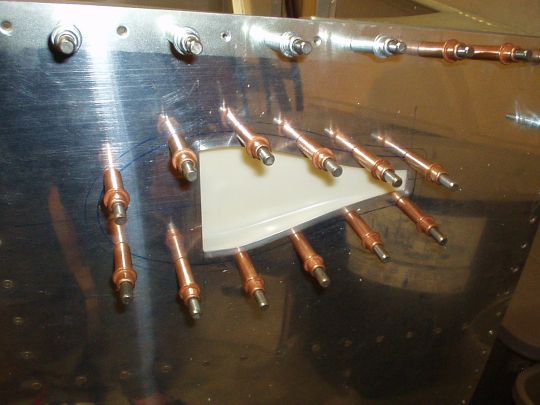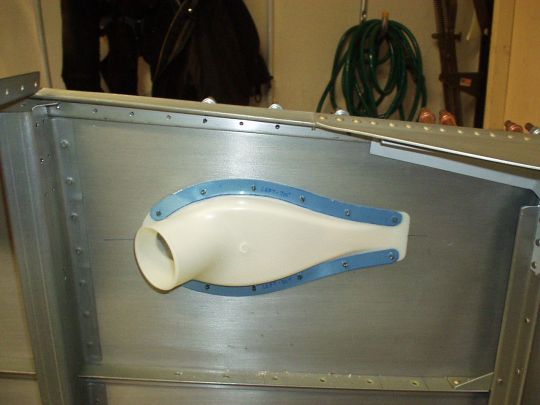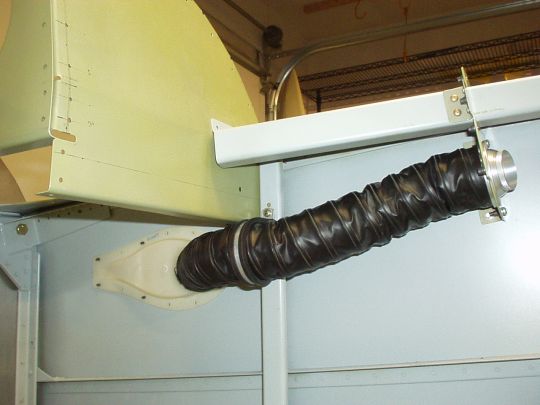|
  

Cabin Air
Running Total Hours:
0.0
 | 2007.05.17: (6.0)
[this entry covers the past few days] The scoops themselves are molded
plastic (ABS, I'm guessing). I cleaned them up by filing down
the burrs and seams and slag. Then, located and marked their
locations on the side skins, making them fit the pre-cut holes as well
as possible. I decided to install my scoops with both adhesive
(probably fuel tank sealant) and 1/8" 120° countersunk blind
rivets (CS4-4). Located and drilled rivet holes in the skins,
then match-drilled the flanges of the plastic scoops.

Match-drilled and cut some 0.016" aluminum strips that'll go
behind the scoops' flanges. This is so the soft plastic flanges
will be sandwiched between aluminum on both sides (the side skins and
the 0.016" strips) and will not be damaged by the rivets.

Dimpled the skins and countersunk the scoops for 1/8" 120° countersunk blind
rivets (CS4-4). |
 | 2008.06.26:
(0.0) The eyeball vents that
Van's ships in the kit feel like they were made by Fisher-Price.
Van's even acknowledges in the builder's manual that when closed they
still leak badly, and they advise a cheesey fix by globbing RTV around
the edges of the door... No thanks. I bought a pair of
machined aluminum vents from SteinAir, p/n AV-1.25C. These are
definitely pricey at $90 a pop, but they're definitely high quality.
These vents from SteinAir mount into a 2" round hole. They
don't have a built-in flange like the plastic ones from Van's.
So I made the flanges from 0.062" 2024-T3 aluminum. I then
mounted that in the same manner as Van's suggested mounting, but I
altered the geometry slightly, and added another screw to the
instrument panel for a more secure installation. |
 | 2009.11.13:
(0.0) Trial-fitted the
ducting between the NACA scoop and the eyeball vent. This is
2" diameter ducting supplied by Van's, which appears to be
similar to CAT ducting (standard CAT/CEET/SCAT/SCEET ducting should
work just as well, but I haven't tried it). A straight duct
length of 15 inches (17 spiral rings) is about right. Note that
the ducting has to curve around the bulkhead and subpanel. In
order to secure it a little bit better and prevent vibration and
chafing, I added a nutplate to the bulkhead to secure the ducting
there with a cushioned clamp. An MS21919-34 clamp works well for
this. Note that this is a 2-1/8" diameter clamp, which
holds the 2" ducting securely without crushing it (selected
empirically by trial and error with different size clamps from 2"
to 2-1/4").
 |

  
|
|